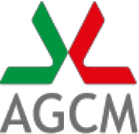PHARMACEUTICAL SECTOR (Conclusion of the fact-finding investigation)
PRESS RELEASE
The Italian Competition Authority concluded its fact-finding investigation into the pharmaceutical sector. The survey was aimed at ascertaining the current competitive conditions of the sector and especially unjustified legal distortions and actions necessary to promote competition.
Considering that a hard public intervention to protect and promote public health is justified and in order to control pharmaceutical public expense, the Authority focused its examination on the spheres of the sector where the functioning of competition could have made possible by the absence of such needs. In particular, in relation to drugs to be totally charged to patients, price setting has been liberalized since November 1995.
The liberalization has completely changed the structure of pharmaceutical public expense. More precisely, the aggregate share of drugs to be paid, partially and totally, by the National Public Health out of the total of ethical medicinal products on prescription only has decreased, shifting from 80.8% in 1993 to 65.9% in 1996, whilst the share of drugs to be totally paid by patients has shown an increase, shifting from 10.5% to 27.8% over the same period.
This conduct was facilitated by the presence of unjustified legal obstacles to the proper functioning of competition.
The most significant obstacle was the provision on the fixed price sale of drugs not reimbursable by the National Public Health all over the national territory. As a consequence, chemists were prevented from granting discounts on prices set by producers.
Such a law provision is likely to impede that consumers could derive benefit from competition between distributors. Indeed, if they try to obtain more convenient supply conditions, they gain margins higher than the fixed ones, whereas consumers do not enjoy the benefit of lower selling prices.
Price liberalization at the sales points would lead to lower consumer prices, in virtue of competition between chemists on the same drugs. Consistently with this, advertising of these drugs should have allowed. The Authority therefore expressed the hope that such a fixed price system would be removed.
Add to that, price liberalization would strengthen competition among outlets, as the Authority advocated in the conclusions of its fact-finding investigation into professional orders. That survey highlighted the opportunity to expand the sale of drugs out of prescription to outlets different than chemistries.
Another serious obstacle to competition is constituted by the obligation on wholesalers to hold at least 90% of commercial drugs. As such, they are imposed to purchase nearly all of the medicinal products existing in a particular market, and the establishment of a comparison between manufacturers of drugs having similar therapeutic characteristics is discouraged. Drugs manufacturers are not incentivated to compete in prices.
Finally, it was also found that generic prescription drugs are scarcely diffused. Even if the law connected to the so-called 1996 Financial Law had incorporated provisions aimed at developing generic medicinal products, their enforcement met difficulties. Indeed, there is a lack of legal instruments necessary to spread such drugs, as follows: certainty and knowledge of patent expiration dates, terms of patent validity in line with European standards, the possibility to register a generic drug before the patent covering its active principle be expired, an incentive system to spread generic prescription drugs and to sell them instead of speciality medicinal products.
With regard to this aspect, the European countries which have marketed generic drugs to a great extent have adopted different solutions. In United Kingdom, for instance, medical prescriptions have to indicate not only the prescribed product trademark but also the corresponding ingredient.
The objective of these rules is to require physicians, before a generic drug is marketed, to make prescriptions by taking into account not only the existing commercial product but also the active principle involving generic drug substitution. Add to that, whether a generic drug would be available, physicians are required to indicate if the prescribed speciality medicine can be substituted by a corresponding generic drug.
Generic prescription drugs development, holding that their average price is lower than that of speciality products, would promote price competition and increase the number of drugs manufacturers.

